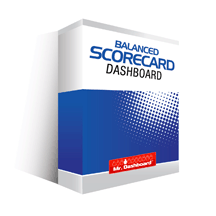Why a Balanced Scorecard Matters
The balanced scorecard (BSC) is more than a performance report – it is a strategic navigation system. It translates vision and strategy into actionable objectives, measurable metrics and concrete initiatives. By looking at the business through four complementary lenses, leaders can see where they are succeeding, where gaps exist, and how to allocate resources for maximum impact.

Four Core Perspectives of a Balanced Scorecard
Each perspective groups related objectives and KPIs, ensuring a balanced view of performance.
- Customer – How do customers see us? Loyalty, satisfaction, acquisition and retention metrics belong here.
- Financial – Traditional financial health indicators such as revenue growth, profit margins, cash flow, and ROI.
- Internal Process – Efficiency, quality, cycle‑time and innovation measures that drive value creation.
- Learning & Growth – Employee skills, culture, technology adoption, and leadership development.
Key Tips for Defining Each Perspective
- Start with the organization’s strategic map – link vision, mission and long‑term goals.
- Use a SWOT analysis to surface strengths, weaknesses, opportunities and threats that belong in each quadrant.
- Limit objectives to 3‑5 per perspective to keep the scorecard focused.
- Choose KPIs that are quantifiable, timely and directly tied to the objective.
Step‑by‑Step Balanced Scorecard Development
Follow this recipe‑style guide to build a scorecard that drives results.
- Define Vision & Strategy – Write a concise statement of where the organization wants to be in 3‑5 years.
- Map Strategic Objectives – Place objectives under the four perspectives, showing cause‑and‑effect relationships.
- Select KPIs – For each objective, pick a leading and lagging indicator. Example: Customer churn rate (lagging) and Net Promoter Score (leading).
- Set Targets – Establish realistic, time‑bound targets (e.g., reduce churn by 5 % in 12 months).
- Identify Initiatives – List projects or actions that will move the metric toward its target.
- Assign Ownership – Give each KPI a responsible leader and a reporting cadence.
- Build Reporting Dashboard – Use visual tools to display real‑time performance. Our Financial Dashboard Excel template is a quick way to start.
- Review & Adjust Quarterly – Hold scorecard review meetings, discuss variances, and adjust initiatives.
Quick Checklist for Each KPI
| KPI | Current Value | Target | Owner | Data Source |
|---|---|---|---|---|
| Customer Satisfaction Score | 78 % | 85 % (12 mo) | Head of CX | Survey Platform |
| Gross Margin | 32 % | 35 % (FY) | CFO | ERP System |
| Process Cycle Time | 6 days | 4 days (Q3) | Operations Manager | Workflow Tool |
Industry‑Specific Examples
Seeing the BSC in action helps you adapt it to your niche.
- Healthcare – Customer perspective becomes patient experience; financial metrics focus on reimbursement rates; internal processes track treatment cycle efficiency; learning & growth measures staff certification.
- Manufacturing – Customer KPI: on‑time delivery; financial KPI: cost per unit; internal process KPI: defect rate; learning KPI: lean training completion.
- Non‑profit – Customer (beneficiary) satisfaction; financial (fundraising efficiency); internal processes (program impact); learning (volunteer development).
Common Pitfalls & How to Avoid Them
- Too Many KPIs – Keep the scorecard lean. Aim for 12‑16 metrics total.
- Non‑aligned Initiatives – Every project must be linked to a KPI target.
- Data Lag – Use real‑time data feeds whenever possible. Our Automated Excel Reporting tool reduces manual entry.
- Missing Ownership – Assign a champion for each KPI and hold them accountable.
Toolkit to Jump‑Start Your Scorecard
Ready to turn theory into practice? Our Balanced Scorecard and Strategy Map Toolkit provides pre‑built templates, strategic map guides, and dashboard visuals that align with the steps above. Pair it with the Business Plan Template for a complete strategic package.
Action Plan – Your First 30 Days
Use the table below to track progress on building your balanced scorecard.
| Day | Milestone | Owner | Deliverable |
|---|---|---|---|
| 1‑5 | Finalize Vision & Strategy | Executive Team | One‑page strategic statement |
| 6‑10 | Map Objectives to Four Perspectives | Strategy Lead | Strategic map diagram |
| 11‑15 | Select KPIs & Set Targets | Functional Heads | KPI inventory sheet |
| 16‑20 | Identify Initiatives & Assign Owners | Project Office | Initiative backlog list |
| 21‑30 | Build Dashboard & Launch Review Rhythm | Data Analyst | Live scorecard dashboard |
Start building a balanced view of performance today and drive smarter decisions across your organization.
Explore the Balanced Scorecard and Strategy Map Toolkit to get everything you need in one place.






























